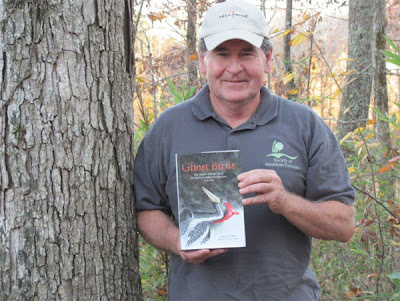•

My book Ghost Birds is about the ivory-billed woodpecker, a species that we hope is not extinct. But what about the Labrador duck pictured above?
I am often asked about birds that have become extinct in our part of the world. Here is a list that have vanished in North America in the past 500 years, but keep in mind that others may have blinked out by manmade causes—principally habitat loss—even before modern science knew they existed. For instance, the Gould’s Emerald hummingbird (Chlorostilbon elegans) is known purely by one collected specimen of unknown origin although it is conjectured that it came from Jamaica or the Bahamas.
The first one on the list was a flightless owl that lived on Andros Island, the largest island of the Bahamas. Being flightless bird on an island is often a species headed down a cul-de-sac, just ask the dodo.
The species highlighted in red were once found in the Unites States. The dates are when they went extinct.
North American Birds: Recent extinctions (1500 AD to present)
1. Bahaman barn owl, (16th Century) (Caribbean)
2. Bermuda night heron (1600s) (Caribbean)
3. Lesser Antillean macaw, (1760) (Caribbean)
4. Guadeloupe burrowing owl, (Little is known) (Caribbean)
5. Guadeloupe parakeet, (Little is known) (Caribbean)
6. Martinique Amazon, a parrot, (Last seen: 1772) (Endemic to Martinique, Caribbean)
7. Guadeloupe Amazon, a parrot, (1779) (Endemic to Guadeloupe, Caribbean)
8. Great auk (Last record: 3 June 1844) (North Atlantic south to New England)
9. Spectacled cormorant, (Last record: About 1850) (Bering Sea)
10. Brace’s emerald hummingbird (Last record: 13 July 1877) (Bahamas)
11. Cuban red macaw (Last record: 1884) (Cuba, Caribbean)
12. Martinique house wren, (Little is known) (Caribbean)
13. Gould’s emerald hummingbird (One specimen, 1860) (Jamaica, Bahamas)
14. Labrador duck (Last record: Fall 1875) (Labrador south to New York)
15. Mauge’s parakeet, (Last seen 1882) (Caribbean)
16. Virgin Islands screech-owl (Little is known) (Caribbean)
17. Guadalupe caracara (Last record: 1 December 1900) (Caribbean)
18. Slender-billed grackle, (Little is known. Last record: About 1910) (Mexico)
19. Guadalupe storm-petrel (Last record: 1911) (Guadalupe Island off Baja California)
20. Grand Cayman thrush (Last record: 1911) (Cayman Islands)
21. Passenger pigeon (Last record: 1 September 1914) (U.S.)
22. Carolina parakeet (Last record: 21 February 1918) (U.S.)
23. Heath hen (Last confirmed record: 11 March 1932) (Martha's Vineyard, U.S.)
24. Dusky seaside sparrow (Last record: 16 June 1987) (U.S., endemic to Florida)
25. Atitlán Grebe (1989) (Guatemala, Central America)
To this list you should probably-maybe add the Bachman's warbler from the American south (the last confirmed sighting was in South Carolina in 1988); imperial woodpecker from Mexico; Jamaica petrel; Eskimo curlew of Canada and Alaska; and Semper's warbler, endemic to Saint Lucia, an island I have visited.
•













































































































